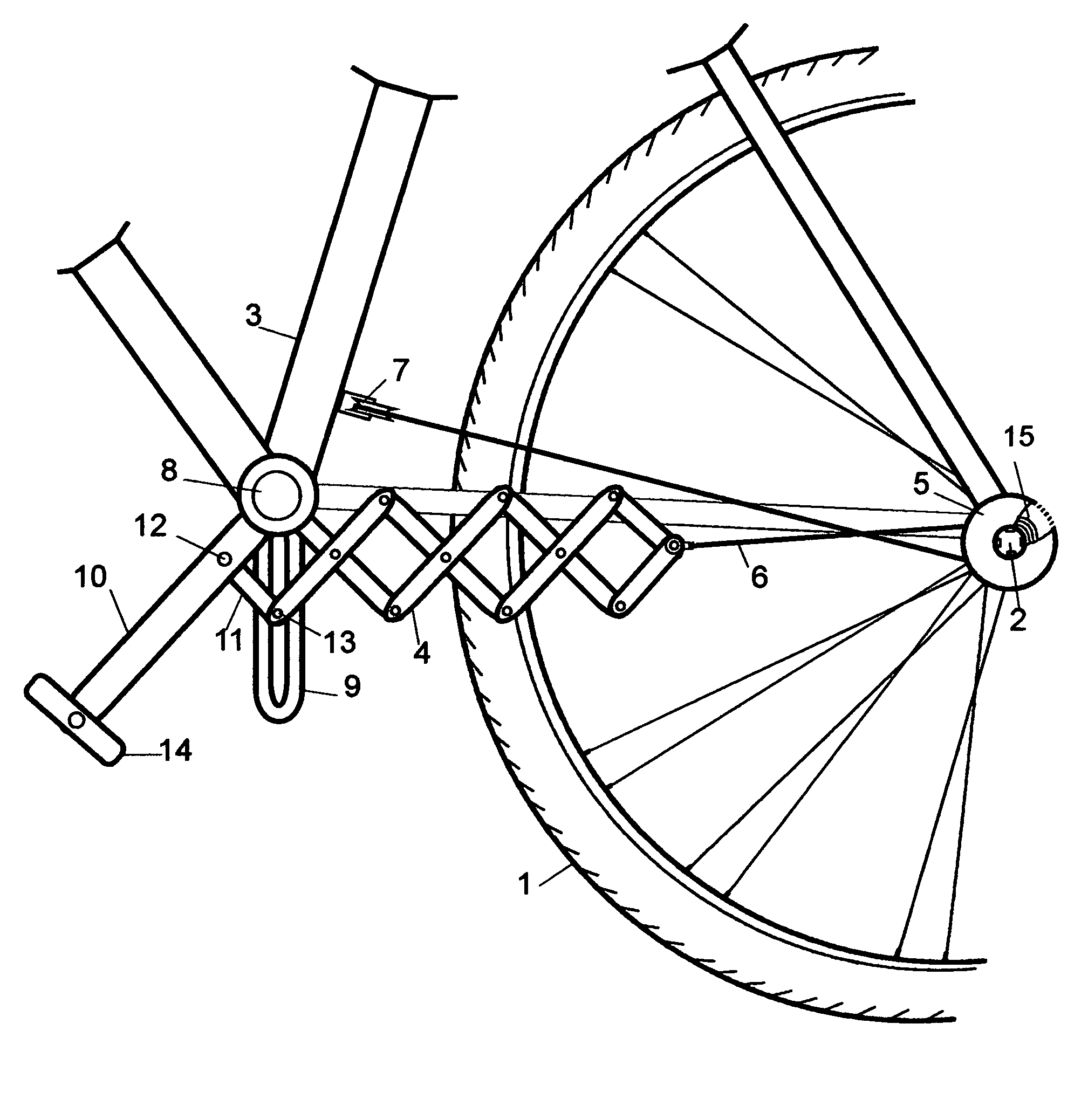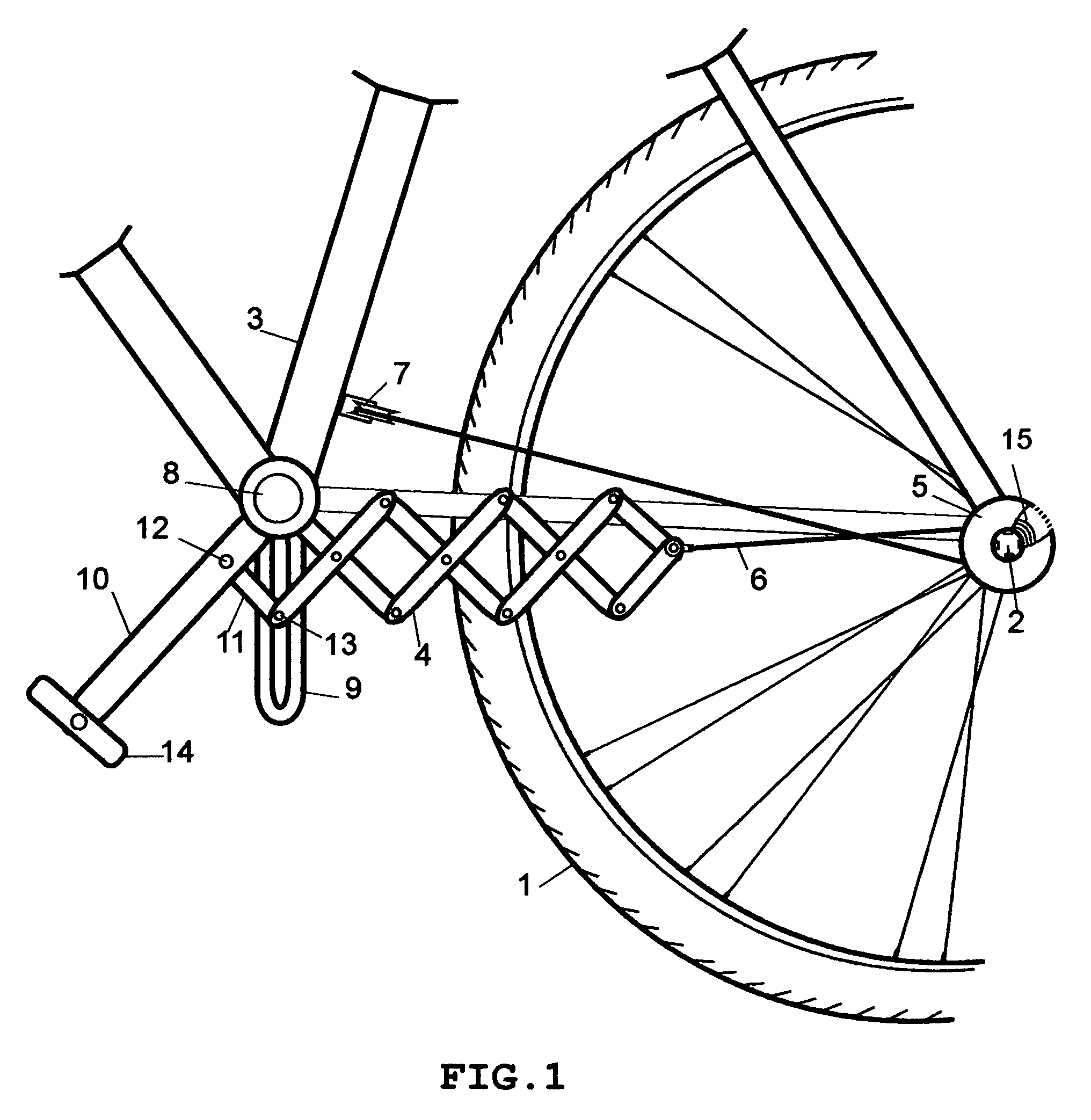Power pedal for a bicycle
a technology of power transmission device and pedal, which is applied in the direction of pedal propulsion, rider propulsion, foot-driven lever, etc., can solve the problem of limited improvement of the ratio of circular motion pedal, and achieve the effect of reducing the human force requirement of foot pedal, improving the speed of the vehicle/bicycle, and efficient transfer of the pedal lever for
- Summary
- Abstract
- Description
- Claims
- Application Information
AI Technical Summary
Benefits of technology
Problems solved by technology
Method used
Image
Examples
Embodiment Construction
[0014] Referring now to the drawings and in particular to FIG. 1, one embodiment of the power pedal is illustrated on a bicycle. The omission of the detail definition and description of the bicycle does not preclude from the understanding of preferred embodiments. However, for the purpose of the present invention embodiments, a cycle-type vehicle includes at least two wheels from which one is a driven wheel 1 with an axle 2 and a frame 3. The frame 3 alternatively has supports or struts commonly provided on bicycles, or other desired structural members, etc.
[0015] The preferred embodiments of the present invention include two scissor-type pedal assembly 4 positioned in a mirror image on both sides of the frame, although the illustrations refer mostly to one. The pedal assembly 4 is pivotally mounted on a stationary shaft 8 on both sides of the frame 3, more or less in the vicinity where the conventional pedals are mounted. Pedal assembly units are defined by pivotally interconnecte...
PUM
 Login to View More
Login to View More Abstract
Description
Claims
Application Information
 Login to View More
Login to View More - R&D
- Intellectual Property
- Life Sciences
- Materials
- Tech Scout
- Unparalleled Data Quality
- Higher Quality Content
- 60% Fewer Hallucinations
Browse by: Latest US Patents, China's latest patents, Technical Efficacy Thesaurus, Application Domain, Technology Topic, Popular Technical Reports.
© 2025 PatSnap. All rights reserved.Legal|Privacy policy|Modern Slavery Act Transparency Statement|Sitemap|About US| Contact US: help@patsnap.com



